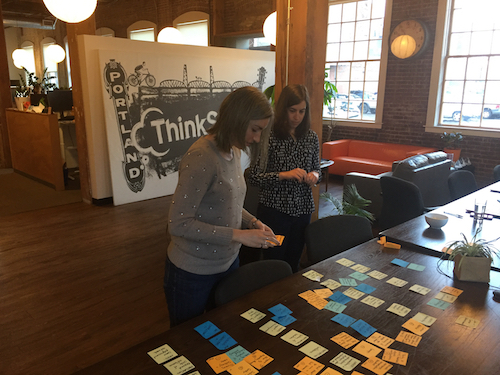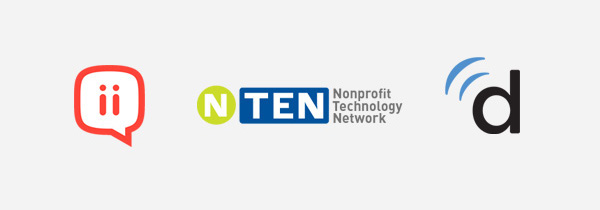How to Run a Landscape Analysis

No organization is an island. While each and every mission-driven organization is unique, many aspects of your work are shared by other organizations. Having similar goals, objectives, and core audiences can make it difficult to know how to stand out. One of the most efficient and cost-saving ways to gain such insight is by understanding and navigating the landscape you operate in.
What is a Landscape Analysis?
Basically, a landscape analysis allows you to learn about your competitor landscape:
Who else is in your sector and doing what you do or want to do? What are they doing well? Where do they fall short (and subsequently, where can you fulfill a need)? What isn’t being done at all?
All of these questions can be answered by a landscape analysis. The process breaks down into three steps, which we explore in more depth later on:
- Identification of key organizations in a field, sector, or location
- Classification of those organizations by relevant characteristics (organization type, target audience, mission)
- Evaluation of how they’re performing relative to the focus of your review
Why is it important?
A better understanding of the broader context in which you are operating can help you design your strategy to maximize your impact. Some benefits can be:
Saving Time & Money
Research can often be an under-resourced line item in a mission-driven organization’s budget. But the upfront investment into a landscape analysis can pay dividends over time by helping avoid problems you might otherwise face, and ensure your offerings are the most effective and unique to grab your audience’s attention and achieve your organizational goals.
Innovating and Improving
Seeing how others are providing a similar offering often sparks creative ideas on your team for how to improve and/or innovate the work.
Making Actionable Decisions
Stuck on how best to move forward or improve your offerings? Knowing what others are doing can help dislodge any of that and bring action items more clearly into focus.
Identifying Opportunities
Differentiating your organization from others in the space is key to success, and a landscape review allows you to identify those areas where you can either outperform others or fill a gap that no one is filling yet. You can quickly get up to speed on everything from a new field to a new geographic focus, from new trends to not-yet identified competitors.
This was where one of our most recent projects with AnitaB.org took us.
AnitaB.org is on a mission to connect, inspire, and guide women in computing and organizations that view technology innovation as a strategic imperative. The organization supports women working in technical fields, as well as the companies that employ them and the academic institutions that educate them. Each year AnitaB.org hosts the Grace Hopper Celebration, a three-day event which draws over 18,000 women together, and it serves as one of the most powerful ways AnitaB.org carries out its mission.

Natania and Mimi attended GHC as part of ThinkShout’s research and introduction to AnitaB.org.
They approached ThinkShout with the goal to provide the same kind of powerful experience and support to women in technology a full 365 days a year, and not just the three days of the Grace Hopper Celebration. Our assignment was to research whether any organization was already providing this kind of support and a sense of community to women in tech, and to also identify online platforms that deliver similar support to their users in unique and innovative ways.
How do you do a landscape analysis?
1. Understand You, Your Goals, and Everyone You Want to Engage
The first step is to be clear about your organizational goals, your target audiences, and what those audiences are looking for. This will ensure that you ask the right questions in your analysis and end up with accurate insights. If you haven’t done so before, conducting user research may help uncover what your audiences really need that they are not currently getting, and can also be great preliminary research into the organizations to include in your landscape analysis (keep an eye out for a future blog post about that!).

Mimi and Chelsea sorted through features to determine how they related to the client/project goals.
For AnitaB.org, we actually started out organizing our thinking around the kind of concrete features that would comprise an online engagement platform — a user’s profile, private messaging and groups, and event functionality, for example. But we stepped back and re-oriented our goal to something that was bigger picture and much more specific to our client’s particular needs: how do we connect women meaningfully and help them advance in their career and as advocates for women in tech via an online platform?
2. Set Parameters
Once you have your goals in hand, you want to determine the parameters, or the criteria, of your analysis: who do you include? Who do you not? You may want to consider:
- Whether organization type matters
- Where there is issue area or mission overlap
- Whether to set a narrow set of parameters within a broad context, or a broad set of parameters within a narrow context
For AnitaB.org, we set a narrow set of parameters within a broad context. We chose to seek out organizations who were meeting their own goals well — these were by and large not the same goals as our client’s — but who did so using similar strategies to AnitaB.org: facilitating connections between people who may otherwise not meet, and providing opportunities for mentorship, professional development, and career advancement.

Photo credit: #WOCinTech Chat on Flickr
Quick Tip: It may be tempting to skip the first two steps and jump right into step 3, but how can you find what you’re looking for if you don’t know what you’re trying to find? A bit more time upfront will result in more efficient research results and outcomes from your analysis.
3. Brainstorm & Vet Potential Organizations
Now that you know what you are looking for, go out and think about every organization that might fit your criteria here! This isn’t the editing stage — that comes next — so be as creative as you can while brainstorming which organizations might fit your criteria. Then, spend a brief time reviewing each one against your parameters, and see how they stack up against each other.
ThinkShout created a list of over 20 organizations that fit our client’s parameters, and it was a diverse list: no two organizations were delivering the same product, but they all had common aspects to their work that mapped back to our goals for our client. We spent about an hour exploring each one and ranking how well it performed against our criteria. Those that ranked highest moved forward in our analysis.
Quick Tip: If you are improving or evolving current offerings, be sure to include your own organization in the next step!
4. Examine Strengths, Weaknesses, and Opportunities of Select Organizations
Time and budget typically don’t allow for a full in-depth analysis of more than a handful of organizations. But you can still get a lot of value of doing a deep dive into those select few. Spend a while longer getting to know your top-ranked organizations, and really uncover those areas where they’re performing well and not so well. An analysis across your select organizations may reveal those opportunities where no one is currently providing any offerings.

Some platforms we included were Italki, NTEN, and Doximity.
At this stage of our client project, we had six platforms that we each spent an additional three hours of time on; getting to know how they facilitated new connections between their users, connected mentors with mentees, delivered professional development content, and promoted career opportunities. In doing so, we came away with many valuable insights that informed the development of the final phase of our project, creating a recommended set of core features for a new online platform. Those insights included:
- Unique and specific features AnitaB.org could take inspiration from to build their own platform,
- Offerings that were so strongly provided by other organizations that it didn’t make sense for our client to invest resources in developing and trying to compete against, and
- A confirmation of market opportunity.
What Could a Landscape Analysis Do For You?
Whether it’s a new website, program, or offering that you’re considering, you don’t want to invest resources in something that someone else is already doing so well that you have no chance to compete with them. On the flip side, if you want to venture into an area that many have struggled with, you want to know what they’ve tried so you can learn their lessons and avoid their same mistakes. After all, your mission, at the end of the day, is at stake. You want to maximize your impact while minimizing cost. A little research in the short-term will go far in ensuring the long-term success of your efforts.

ThinkShout is Here to Help
Are you considering a landscape analysis for your organization but not sure if you have the bandwidth to take on the work? We’d love to help you! Our team is comprised of former nonprofit staff and agency veterans who have decades of experience working with nonprofits that vary in size, budgets, and goals, so we know what it’s like to be in your shoes. We are here to help you achieve your goals and be your strategic partner. To get started, let us know a little more about your needs.